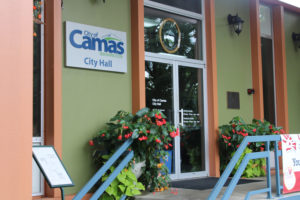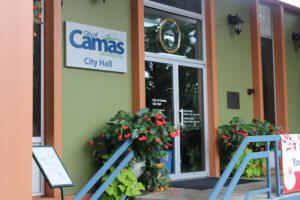Camas Mayor Steve Hogan is calling on Camas City Council members to approve new revenue sources that will keep a “status quo” budget for the City in 2025 and 2026, and also provide enough revenues to hire three new Camas Police Department supervisors.
Camas Finance Analyst Debra Brooks and Camas Finance Director Cathy Huber Nickerson presented more information about the mayor’s draft 2025-26 budget during the Council’s workshop on Monday, Oct. 21.
Currently, the City is facing a $3 million revenue shortfall over the course of the 2025-26 biennial budget. Huber Nickerson and Brooks said Monday that, in 2023, it became apparent that the City would be facing a revenue shortfall in the coming years.
“It became clear that revenues would be stagnant,” Brooks told Council members Monday, adding that new revenues would be necessary to avoid making any major cuts to services and to fund the $1.25 million “decision package” that would add two night sergeants, one lieutenant and retirement overhires to the police department in a bid to, as Huber Nickerson and Brooks said in their presentation, “focus on urgent, long-delayed public safety needs.”
Other departments would be able to sustain their current services through 2025-26 if Council members approve the mayor’s suggested revenue sources — including taking the City’s state-allowed 1% increase to the overall property tax levy amount, creating a transportation benefit district to fund the City’s street maintenance and other street-related needs, implementing higher service fees and business license fees, and asking voters to approve a 6% utility tax on City utilities such as water, garbage and sewer services.





